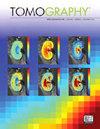大流行后急诊科的胸部成像习惯改变了吗?
IF 2.2
4区 医学
Q2 RADIOLOGY, NUCLEAR MEDICINE & MEDICAL IMAGING
引用次数: 0
摘要
在过去的二十年里,急诊科接受断层扫描的病人比例有所增加。在过去几年中,由于这一流行病的影响,死亡人数有了更大幅度的增加。本研究旨在确定在急诊科接受胸部成像的患者比例、首选的成像方法,以及在大流行前和大流行后接受成像的患者的人口统计学特征。这项回顾性横断面研究包括2019年1月至2023年3月期间急诊科收治的患者。根据大流行前(2019年1月- 2020年2月)、大流行前(2020年3月- 2022年3月)和大流行后(2022年4月- 2023年3月)的时期,比较了女性、男性和急诊入院人数、接受胸部x光检查(CXR)和胸部计算机断层扫描(CCT)的患者比例,以及接受胸部成像病例的年龄和性别分布。大流行前和大流行后的急诊入院总人数相似(大流行前:21984±2087;大流行后时期:22,732±1701)。与大流行前相比,大流行后CCT率上升(大流行前:4.9±0.9,大流行后:7.46±1.2),CXR率下降(大流行前:16.6±1.7%,大流行后:13.3±1.9%)(p <0.001)。接受胸部成像(CXR)的患者的平均年龄;大流行前时期:56.6±1.1年;大流行后时期:53.3±5.6年。有条件现金转移支付;大流行前时期:68.5±1.7年;大流行后期:61±4.0年)低于大流行前期(p <0.001)。在大流行后时期,急诊科的胸部成像偏好发生了变化。在大流行后时期,当年轻患者在急诊科接受胸部成像时,CCT是首选,CXR率下降。令人担忧的是,患者在较年轻时就受到较高剂量的辐射。本文章由计算机程序翻译,如有差异,请以英文原文为准。
Have Chest Imaging Habits Changed in the Emergency Department after the Pandemic?
The rate of patients undergoing tomography in the emergency department has increased in the last two decades. In the last few years, there has been a more significant increase due to the effects of the pandemic. This study aimed to determine the rate of patients who underwent chest imaging in the emergency department, the preferred imaging method, and the demographic characteristics of the patients undergoing imaging during the pre-pandemic and post-pandemic periods. This retrospective cross-sectional study included patients admitted to the emergency department between January 2019 and March 2023. The number of female, male, and total emergency admissions, the rate of patients who underwent chest X-ray (CXR) and chest computed tomography (CCT), and the age and gender distribution of the cases who underwent chest imaging were compared according to the pre-pandemic (January 2019–February 2020), pandemic (March 2020–March 2022), and post-pandemic (April 2022–March 2023) periods. Total emergency admissions were similar in the pre-pandemic and post-pandemic periods (pre-pandemic period: 21,984 ± 2087; post-pandemic period: 22,732 ± 1701). Compared to the pre-pandemic period, the CCT rate increased (pre-pandemic period: 4.9 ± 0.9, post-pandemic period: 7.46 ± 1.2), and the CXR rate decreased (pre-pandemic period: 16.6 ± 1.7%, post-pandemic period: 13.3 ± 1.9%) in the post-pandemic period (p < 0.001). The mean age of patients who underwent chest imaging (CXR; Pre-pandemic period: 56.6 ± 1.1 years; post-pandemic period: 53.3 ± 5.6 years. CCT; Pre-pandemic period: 68.5 ± 1.7 years; post-pandemic period: 61 ± 4.0 years) in the post-pandemic period was lower than in the pre-pandemic period (p < 0.001). Chest imaging preferences in the emergency department have changed during the post-pandemic period. In the post-pandemic period, while younger patients underwent chest imaging in the emergency department, CCT was preferred, and the rate of CXR decreased. It is alarming for public health that patients are exposed to higher doses of radiation at a younger age.
求助全文
通过发布文献求助,成功后即可免费获取论文全文。
去求助
来源期刊

Tomography
Medicine-Radiology, Nuclear Medicine and Imaging
CiteScore
2.70
自引率
10.50%
发文量
222
期刊介绍:
TomographyTM publishes basic (technical and pre-clinical) and clinical scientific articles which involve the advancement of imaging technologies. Tomography encompasses studies that use single or multiple imaging modalities including for example CT, US, PET, SPECT, MR and hyperpolarization technologies, as well as optical modalities (i.e. bioluminescence, photoacoustic, endomicroscopy, fiber optic imaging and optical computed tomography) in basic sciences, engineering, preclinical and clinical medicine.
Tomography also welcomes studies involving exploration and refinement of contrast mechanisms and image-derived metrics within and across modalities toward the development of novel imaging probes for image-based feedback and intervention. The use of imaging in biology and medicine provides unparalleled opportunities to noninvasively interrogate tissues to obtain real-time dynamic and quantitative information required for diagnosis and response to interventions and to follow evolving pathological conditions. As multi-modal studies and the complexities of imaging technologies themselves are ever increasing to provide advanced information to scientists and clinicians.
Tomography provides a unique publication venue allowing investigators the opportunity to more precisely communicate integrated findings related to the diverse and heterogeneous features associated with underlying anatomical, physiological, functional, metabolic and molecular genetic activities of normal and diseased tissue. Thus Tomography publishes peer-reviewed articles which involve the broad use of imaging of any tissue and disease type including both preclinical and clinical investigations. In addition, hardware/software along with chemical and molecular probe advances are welcome as they are deemed to significantly contribute towards the long-term goal of improving the overall impact of imaging on scientific and clinical discovery.
 求助内容:
求助内容: 应助结果提醒方式:
应助结果提醒方式:


